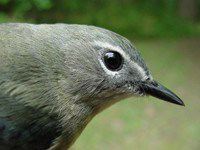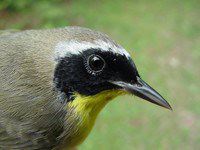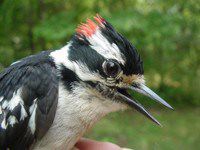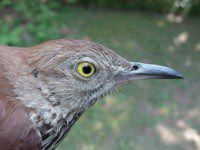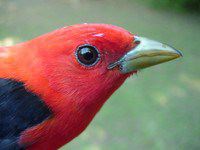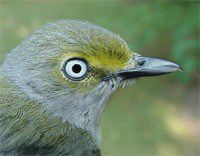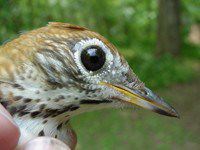 HOME: www.hiltonpond.org |
|
||
|
|
|||
|
|
|||
|
|
|||
|
|
|||
|
|
|||
|
THIS WEEK at HILTON POND |
|
At Hilton Pond Center, we've often wondered who came up with some of the more unusual names for wildflowers and other living things. There are common names that are just plain curious--like "Viper's Bugloss" (a roadside "weed") or "Long-billed Dowitcher" (a shorebird) or Great Spangled Fritillary (a butterfly)--and there are even names that are misleading or incorrect--like "Blue-eyed Grass." 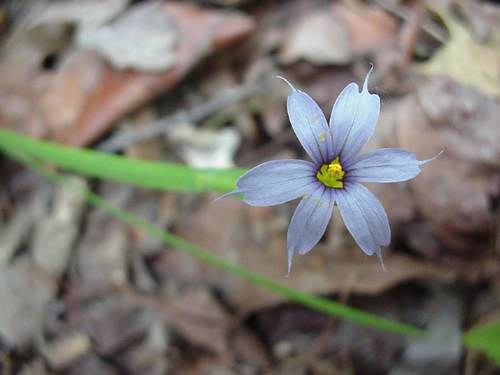 Blue-eyed Grass (above) is incorrectly named not once, but twice: it isn't a grass, and there's no blue "eye" to its flower. Sure, the leaves of the plant are flat and grass-like (below right), but grasses typically have obscure, greenish or brownish flowers and are never anything like the blue, six-petaled, YELLOW-eyed blossom of this native North American wildflower.
Blue-eyed Grass is in the Iridaceae--the Iris Family--along with gladiolus, crocuses, and, of course, irises. In the Carolinas there are several kinds of Blue-eyed Grass (Sisyrinchium spp.); the one illustrated here--S. mucronatum --grows along the trails at Hilton Pond Center (see bottom photo) and may be the most common species in the Piedmont. It is found in sandy or rocky acid soil, and sometimes even in the front lawn if folks aren't overly committed to constant mowing. Individual flowers of Blue-eyed Grass last for several days. They close up at night--and sometimes on cloudy days--which helps explain the pollen deposit on the petals in the photo at top. Like most other irises, Blue-eyed Grass produces a fruit capsule shortly after the flower wilts. In S. mucronatum , the capsule starts out green (left); as the seeds ripen, they turn black and burst from the capsule membrane. The seeds--three per capsule--often don't move very far from the parent plant, which may explain why Blue-eyed Grass often grows in dense stands. And so, to review, Blue-eyed Grass is indeed misnamed in two ways: its blue flower has a yellow center, and it's not a grass. We suggest the name of our local species be changed immediately to "Yellow-eyed Iris," but to be honest we really don't know what to do about Sisyrinchium albidum, a species of Blue-eyed Grass that has WHITE flowers! 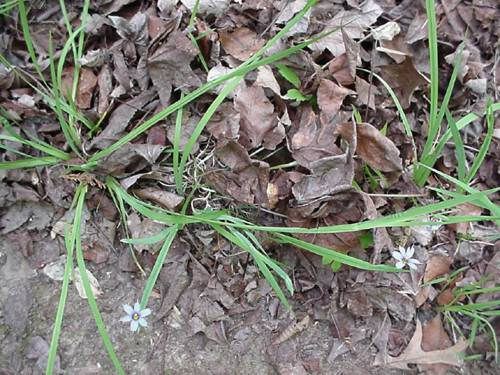 If you enjoy "This Week at Hilton Pond," please help Support Hilton Pond Center for Piedmont Natural History |
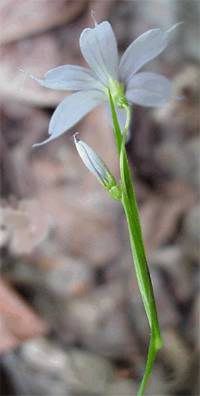 Of course, Blue-eyed Grass IS classified in the Monocot Order (Monocotyledonaceae) --along with grasses, sedges, and cattails, all of which have "woody" fibers of xylem and phloem scattered throughout the entire stem. (The Dicotyledonaceae, or dicots, comprise a much larger group of plants whose food- and water-conducting fibers occur in a ring around a central pith.)
Of course, Blue-eyed Grass IS classified in the Monocot Order (Monocotyledonaceae) --along with grasses, sedges, and cattails, all of which have "woody" fibers of xylem and phloem scattered throughout the entire stem. (The Dicotyledonaceae, or dicots, comprise a much larger group of plants whose food- and water-conducting fibers occur in a ring around a central pith.) The three stamens surround a central pistil--a situation that probably helps the plant self-pollinate.
The three stamens surround a central pistil--a situation that probably helps the plant self-pollinate.